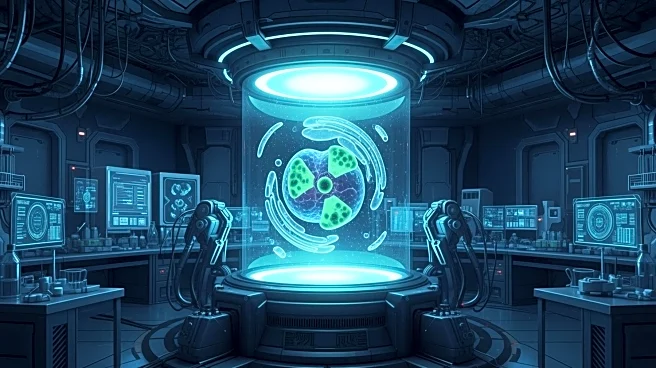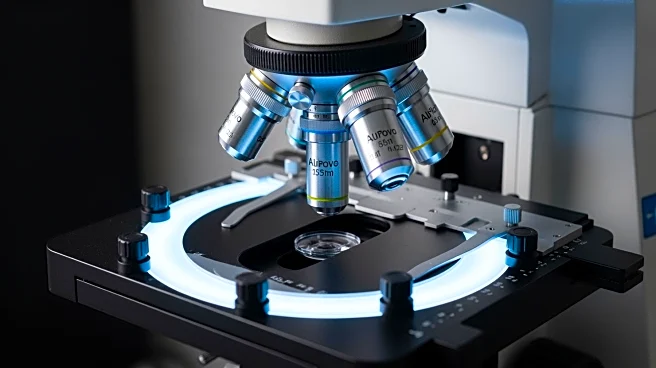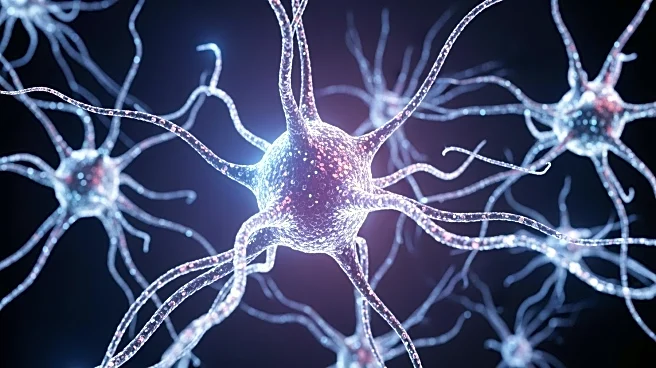What's Happening?
A new study published in Nature details the development of a rapid-degradation system combined with super-resolution microscopy to study nuclear organelles in eukaryotic cells. The system, known as hGRAD,
utilizes a plasmid that can be integrated into any cell line, allowing for the rapid degradation of GFP-tagged proteins within nuclear membraneless organelles (MLOs). This advancement addresses the challenge of studying RNA-binding proteins (RBPs) within nuclear MLOs, which are crucial for coordinating the nuclear stress response. The hGRAD system enables researchers to track the effects of specific RBPs on MLO architecture, providing insights into their functions and interactions.
Why It's Important?
The development of the hGRAD system is significant for the field of cellular biology, as it offers a new method for studying the complex interactions within nuclear organelles. By enabling rapid degradation of specific proteins, researchers can better understand the roles of RBPs in cellular processes and stress responses. This could lead to advancements in understanding diseases related to cellular stress and dysfunction. The ability to study these proteins in detail may also contribute to the development of targeted therapies for conditions involving nuclear organelle abnormalities.
What's Next?
Researchers are expected to utilize the hGRAD system to explore further the functions of RBPs in various cellular contexts. This could lead to new discoveries in the mechanisms of nuclear stress response and the development of novel therapeutic approaches. The system's adaptability to different cell lines suggests potential applications in diverse areas of biological research, including cancer studies and neurodegenerative diseases.
Beyond the Headlines
The introduction of the hGRAD system may also prompt ethical discussions regarding genetic manipulation and the use of advanced microscopy techniques in research. As scientists gain more control over cellular processes, considerations about the implications of such technologies on human health and the environment may arise.












